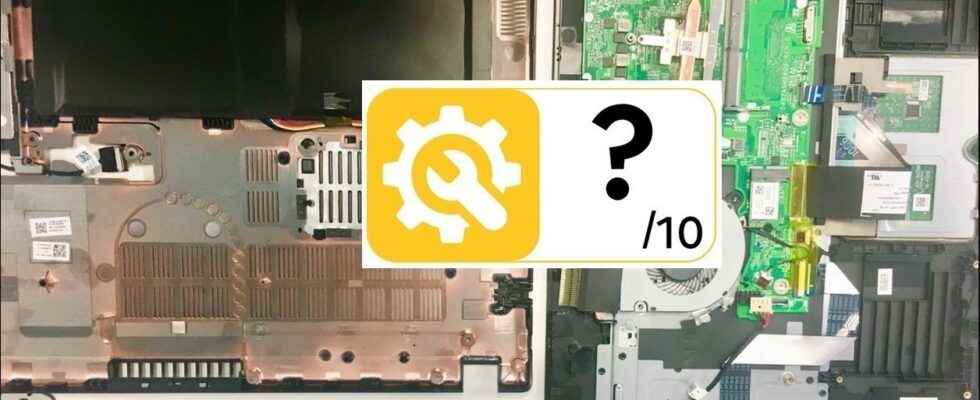One year after its implementation, the repairability index is a good way to know if the device is easy to repair. But is it reliable? The criteria were established by the legislators in agreement with the manufacturers. But, the weak point of this device is that the indices are then provided by the manufacturers, and not by independent organizations.
The HOP (Halte à l’Obsolescence Programmetée) association has published a report which contains, among other things, a counter-expertise of the calculation of the index on six devices (three smartphones, two laptops and a television), without specifically mentioning which models are affected. Of the six products, five obtain scores lower than those announced by the manufacturers, with a difference of approximately 15% for three of them.
The HOP association indicates in particular that manufacturers tend to overestimate the availability of spare parts. In addition, HOP believes that some points in the calculation grid are ambiguous, which can lead to different scores depending on the interpretation.
Moreover, the manufacturers do not always provide all the details of the calculation of the index of their devices and only publish a simple summary grid.
Very good clues for smartphones that are difficult to repair
The HOP association, for example, criticizes certain smartphones from Samsung and Apple which obtain very good indices while certain components are welded or glued, which can make repair very difficult, if not impossible.
She also criticizes the score of the Vivo Y21s smartphone (7/10), because the manufacturer does not offer any spare parts, which prevents any repair.
A Philips television for its part obtains an excellent index of 7/10 while its score for the price of spare parts is only 7/20. This figure indicates that the parts are too expensive and therefore there is little chance that customers will consider a repair.
No real discriminating criteria
The report of the HOP association thus paints an unflattering portrait of the calculation of the repairability index. Remember that each sub-criterion has the same weighting and that there is no eliminatory mark.
The association would like the French authorities to increase the transparency and reliability of the repairability index, by modifying the rating system to give more weight to important criteria such as the ease of dismantling a device, as well as the availability and price of spare parts.
Also see video:
The association also indicates in its report that the deployment of the index is not the same depending on the product category (porthole washing machines, smartphones, laptops, televisions and electric lawnmowers).
By consulting a database comprising 2,000 clues, she observes that it is very easy to find a score for a smartphone, but much more difficult for a laptop.
Finally, products with a score lower than 4/10 remain marginal. This may mean that most devices are easily repairable, or that the calculation grids are not discriminating enough.
Source : HOP
